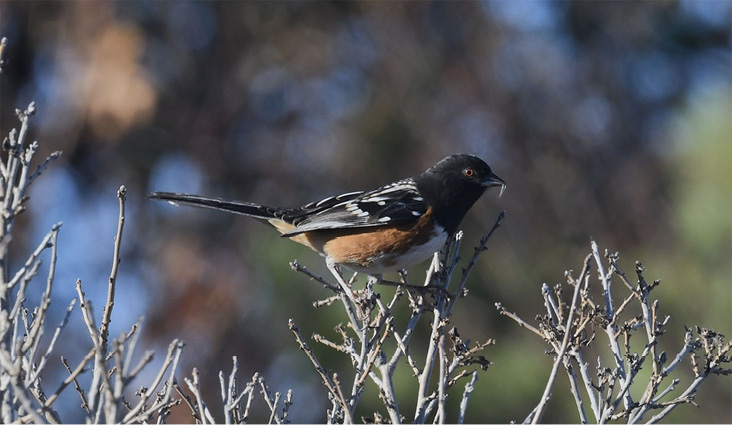John Kricher

Spotted Towhee. Photograph by Ted Bradford.
Remember Oliver Twist’s “Please, sir, I want some more” from the 1838 Charles Dickens novel? Oliver wanted more food. The bird world abounds with feathered Olivers. Birds are endothermic (warm-blooded), and their high stable body temperatures require a high energy input to maintain. Birds have the highest metabolic rate of any animal. Indeed, many small bird species—such as hummingbirds and kinglets—face the possibility of starvation on a daily basis. Mammals are also endothermic, and the mammals that come closest to being as metabolically demanding as birds are shrews, which are small to tiny, super-charged, protein-demanding creatures. When I was in graduate school, a professor kept two short-tailed shrews in a terrarium and fed them huge helpings of sliced chicken on a daily basis. Each day they ate meat approximating their weight (or more!). The only way to sustain such high-octane demands is by eating….and eating. The smaller the animal, particularly if it is endothermic, the more it must eat relative to its body size. If your automobile had the energy demands of a small bird, you’d have to gas it up or recharge it dozens of times in the course of the day. Birds must be constantly hungry in whatever way hunger is expressed in birds’ minds. Small birds burn much more energy per gram than larger birds, but larger birds still are “high octane” animals. A Cooper’s Hawk, for example, requires an average of two songbirds per day to maintain body weight (Dunne 2025).
To view the rest of the article you'll need to
subscribe. Bird Observer publishes original articles on birding locations, on avian populations and natural history, on regional rarities, field notes, field records, photographs, and art work.